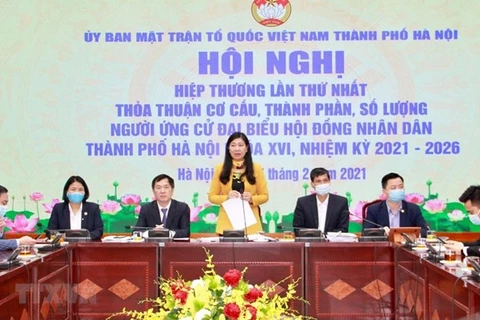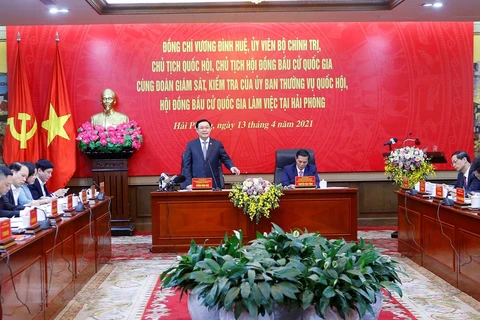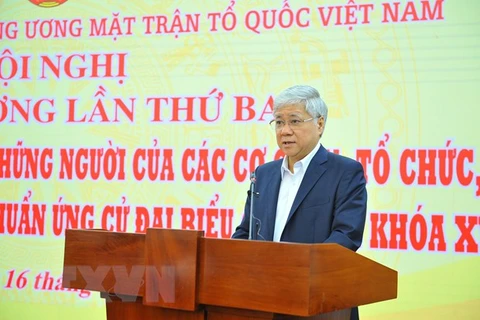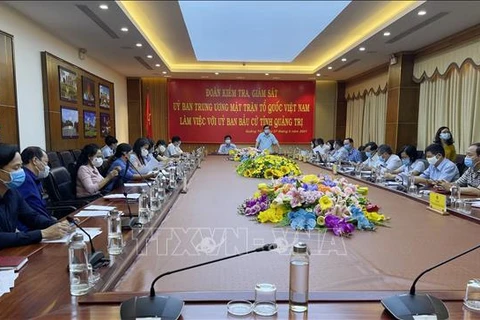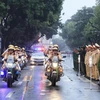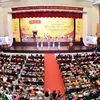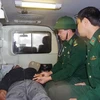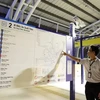 A workshop in Tu Van Village is seen busy at making the national flags and banners in preparation for the upcoming general election. (Photo: VNA)
A workshop in Tu Van Village is seen busy at making the national flags and banners in preparation for the upcoming general election. (Photo: VNA) Located 30km south of Hanoi, the trade village is famed for its embroidery and weaving and has made millions of national flags over the last 75 years.
According to local elderly people, embroidery and weaving first prospered in the village in the 16th century. Many of the villagers even opened shops on Hang Bong and Hang Gai streets in Hanoi’s Old Quarter.
 The tailors need to be meticulous in their work to make sure each flag complies with regulatory requirements. (Photo: VNA)
The tailors need to be meticulous in their work to make sure each flag complies with regulatory requirements. (Photo: VNA) With the development of the market economy, many households in Tu Van Village have switched from traditional embroidery to specialising in making flags, panels and banners.
Orders were sent to the village earlier this year in preparation for the upcoming national election, with nearly double the number of the previous year.
Therefore, all stages of making national flags from choosing fabrics, operating machines, printing, embroidering and sewing have been implemented urgently to meet high demand.
“We all feel happy and proud when our products, the national flags, are hung solemnly in many institutes across the country, even though the work is hard and the income is not high,” said Nguyen Thu Phuong while rapidly but accurately embroidering the five-pointed yellow star on a national flag.
A complete national flag involves dozens of steps that do not require much skill, but the tailors need to be meticulous in their work to ensure each flag complies with regulatory requirements.
According to experienced tailors, the steps of printing, placing and embroidering the five-pointed star on the cloth are the most important. For them, the national flag represents the soul of the nation so the step is performed with high concentration by skilled tailors.
Whether the flag is tens of square metres large or as small as a palm hand, the five-pointed yellow star must be placed in a solemn position with the most harmonious proportion.
"We have to work with enthusiasm, maximum ability and technique to make the most beautiful flags," said Nguyen Van Phuc whose family has been in the trade for three generations./.
VNA

